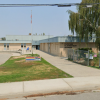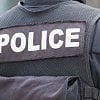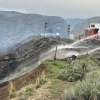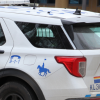Transcripts of calls between the RCMP and search and rescue officials in Halifax show an overall lack of understanding of what was required to have a military aircraft assist during the search for a gunman who killed 22 people in April 2020.
Log and audio transcripts obtained by The Canadian Press under an access to information request also reveal muddled advice from the military’s Joint Rescue Coordination Centre, which was initially under the impression that it had adequately dealt with the RCMP’s request for an aircraft equipped with infrared technology.
Before calling search and rescue, the Mounties had tried unsuccessfully to get an aircraft with sensors that could detect the heat signature of a human body, which they needed as they searched for the killer in the woods around Portapique, NS, soon after the 13−hour rampage began on April 18, 2020. RCMP aircraft in the Maritimes were not available because of maintenance issues.
During a 7 a.m. shift change on April 19, notes show that rescue centre staff discussed an RCMP call for assistance received at 11:47 p.m. the night before.
“We were called by the RCMP who asked us if we would — if we had any access to FLIR (forward looking infrared technology), which we told them we do not, nor do we get involved in law enforcement,” a staff member identified only as Bud said. “So we kind of told them to pound sand, I guess.”
The official was quickly reminded by an unidentified female colleague that the RCMP had been directed to PAL Airlines, a civilian contractor that had the technology required for the manhunt.
“Yeah we directed them to PAL,” the first official replied. “So we didn’t do anything, but we told them who they could call for help.”

A transcript of the call confirms the advice, but also shows that no mention was made by the rescue centre that the RCMP would have had to make a formal request for military air assistance. The request needed to be made through Nova Scotia’s Emergency Management Office, which could then pass it on to federal public safety officials.
“If there’s an active shooter in the area, they won’t send the (search and rescue) asset,” the rescue centre told RCMP dispatch in Truro, NS. “If you are looking for FLIR, have you looked at PAL or Transport Canada?”
“Sorry, Transport Canada or who?” was the reply from RCMP.
The search and rescue official explained the service and capabilities offered by PAL and then provided the airline’s dispatch phone number to the RCMP.
The logs show the Mounties made a second call to the rescue co−ordination centre at 10:58 a.m. on April 19. By then, they already had the use of a Department of Natural Resources helicopter as they chased the gunman, who had just wounded one RCMP officer and killed another near Shubenacadie, NS.
“We’re wondering whether you can get somebody in the air for us?” RCMP dispatch asked a rescue official identified as Scott. “We’re just trying to get all hands on deck.”
Scott told the dispatcher that he can’t approve the request because search and rescue doesn’t respond to shooting incidents, but he added that he would take the request up his chain of command. Scott then conferred with another rescue official identified as Christian who said “the answer is probably going to be no” but told Scott to take the request for a helicopter to the Combined Aerospace Operations Centre in Winnipeg.
Scott then relayed the RCMP request to an officer identified as Michael, a captain in Winnipeg, who turned it down because it was not a search and rescue situation.
“We can’t just chop a helicopter and help the RCMP doing an active shooter,” Michael said. “The request has to go from the RCMP through the province, to the federal government. I know it sounds convoluted, but it’s the only way we can do it.”
The audio logs also show that Andrew Mitten, a duty officer in Nova Scotia’s Emergency Management Office, was contacted by search and rescue official Colin Glover, who explained the situation and got permission from Mitten to make a formal request to the military on behalf of the RCMP.
“I will pass it along to our chain of command,” Glover told Mitten.
As this was going on, the search and rescue centre also made a call to the RCMP where an unidentified officer was told to make a request through EMO.
“You need to go through proper channels, through your Emergency Manager’s Office,” the RCMP was told. “Which we are trying to do on your behalf right now. We’re also trying to work the back ends to see if — what we can do in the background, but you should try to get a call into the EMO for the request.”
Eventually rescue centre staff got back to Mitten and told him to contact the military directly to ask for a helicopter. As inquiries into what could be done continued, rescue officials learned by 11:26 a.m. that the killer had been “apprehended.”
In fact, he had been shot and killed by police at a gas station in Enfield, NS, outside of Halifax.
















